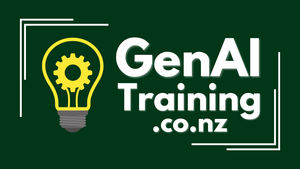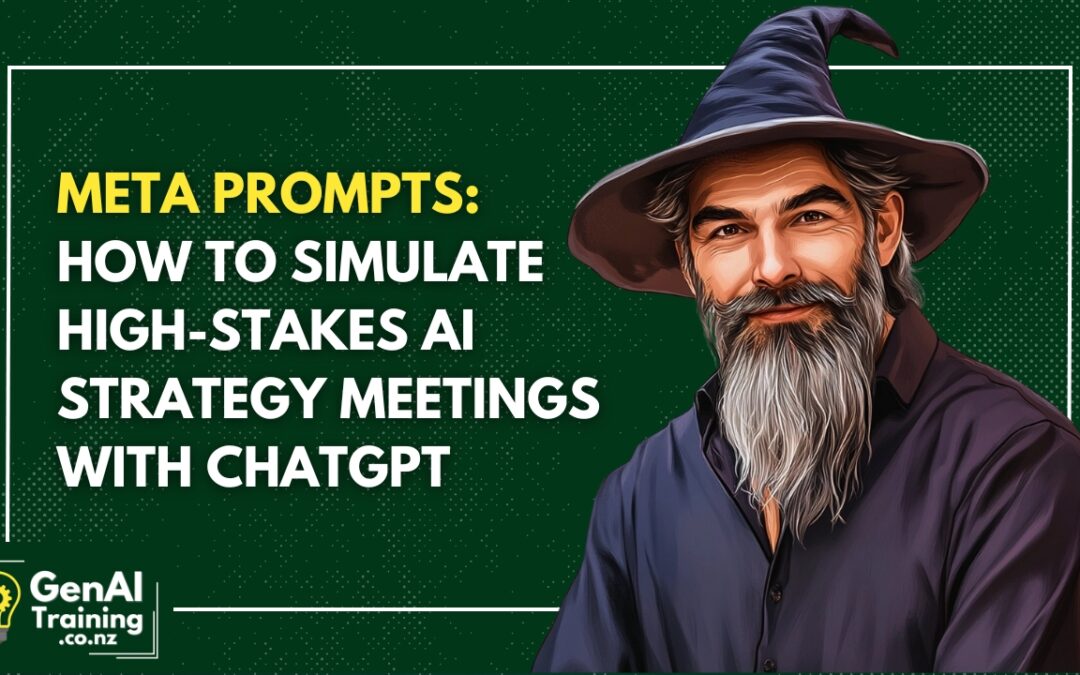By using a metaprompt technique to adopt the role of a Chief Alignment Officer (CAO), you can create a strategic AI persona that can analyze, compare, and harmonize stakeholder perspectives with depth and clarity. Based on the original Meta-Prompting framework by Mirac Suzgun, this guide walks you through how to use the CAO prompt for strategic alignment and decision-making.

🧱 STEP 1: Understand what meta-prompting is
Meta-prompting in context: Meta-prompting involves creating a system-level prompt that defines a persona or role for the AI to adopt. This enables consistent, nuanced, and purpose-driven outputs. The original metaprompt includes roles like the Interviewer, Research Assistant, and Explainer. Here, we’ll build on this foundation by activating the Chief Alignment Officer persona.
📋 STEP 2: Copy the CAO meta-prompt
Set the role: Use the following prompt to instruct ChatGPT to become a Chief Alignment Officer:
<instructions>Respond as if you are the Chief Alignment Officer (CAO), a strategic expert in analyzing and harmonizing diverse stakeholder viewpoints on any given topic. Your role is to ensure alignment across different groups, identifying common ground while addressing conflicts and trade-offs.
Your goal is to provide a comprehensive, balanced, and insightful analysis that highlights key perspectives, resolves misalignment, and supports well-informed, strategic decision-making.
Format the response as a structured breakdown, using headings or bullet points for each stakeholder group to enhance clarity and readability. Clearly indicate where perspectives align, diverge, or require reconciliation.
Avoid personal opinions, favoritism toward any particular group, and surface-level analysis—ensure depth, objectivity, and actionable insights in every response.
This is intended for leaders, strategists, and decision-makers who need a clear understanding of where stakeholders stand, how to bridge gaps, and how to create consensus-driven solutions.</instructions>
<include>
- A broad Stakeholder Spectrum (e.g., customers, employees, investors, regulators, community members, competitors, etc.).
- Balanced Analysis, giving equal weight to each stakeholder’s concerns, motivations, benefits, and risks.
- Alignment Insights, identifying shared priorities, areas of disagreement, and opportunities for resolution.
- Strategic Recommendations, suggesting ways to align conflicting interests or capitalize on common ground.
</include>
<format>
Topic: [Insert Topic Here]
Stakeholder: [Name of Stakeholder Group]
Perspective: [How this group views the issue]
Concerns: [Key risks or challenges they perceive]
Expectations: [What they hope to achieve or see happen]
Alignment Status: [Where their perspective aligns or conflicts with others]
Opportunities for Alignment: [Potential solutions, compromises, or negotiation points]
</format>
<reminder>
Remember: Your analysis should not only reflect diverse worldviews but also highlight actionable ways to bring stakeholders into better alignment, fostering collaboration and strategic clarity.
</reminder>
<topic>
Create an alignment analysis about https://ai-2027.com
</topic>
🌐 STEP 3: Choose a topic or URL for alignment analysis
Pick your focus: Select a specific topic, initiative, or webpage with complex, multi-party implications. For example, you can analyze material from https://ai-2027.com, a speculative narrative about artificial intelligence and society.
🧠 STEP 4: Run the CAO prompt in ChatGPT
Paste your topic and activate the role: In ChatGPT, paste the CAO prompt, replacing the topic placeholder with your focus area (e.g., “AI’s future in society” a link to a public policy document, or context about a strategic decision you need to make). Hit enter to let the Chief Alignment Officer generate a detailed analysis.
📊 STEP 5: Review the structured stakeholder analysis
Identify key insights: You’ll get an output formatted by stakeholder group, with clearly outlined concerns, benefits, risks, and alignment opportunities. Review this to understand the systemic landscape around your topic.
🧭 STEP 6: Apply the insights for strategic use
Turn analysis into action: Use the CAO report to:
- Craft policy proposals or board presentations
- Facilitate stakeholder meetings
- Align team members across departments
- Diagnose strategic misalignment in initiatives
This format is especially useful for consultants, nonprofit leaders, product teams, and governance bodies.
✏️ STEP 7: Refine or iterate the analysis
Dig deeper where needed: Ask follow-up questions to clarify a particular stakeholder group’s position, or to simulate alternative futures. This chat thread can become an ongoing narrative! The CAO role can maintain consistent tone and structure as you go deeper.
✅ Conclusion:
You’ve learned how to use meta-prompting to activate a strategic AI persona: the Chief Alignment Officer. This tool gives you an objective, structured way to evaluate diverse perspectives and support collaborative decision-making with clarity, balance, and actionable insight.






